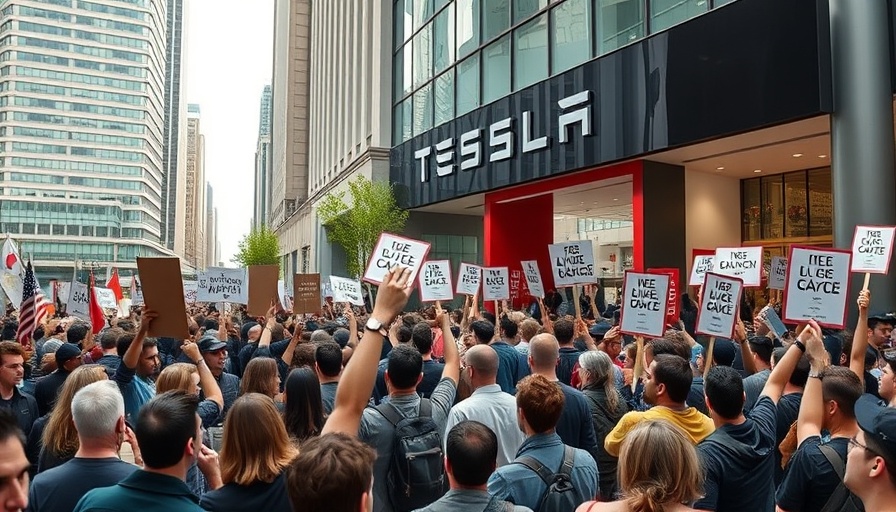
The Growing Tension: What to Expect on the Global Day of Action
The upcoming global day of action for the "Tesla Takedown" is anticipated to be a highly contentious event. Protesters, driven by frustration with Tesla CEO Elon Musk's influence over public finances and government spending, are planning demonstrations outside Tesla facilities worldwide on March 29. While organizers advocate for peaceful protests, the environment surrounding these events is increasingly charged, with tensions rising between law enforcement and activists.
The Fine Line Between Protest and Violence
As protests gain momentum, the media has blurred the lines between peaceful demonstrations and violent actions. Debates about property destruction during protests have created a narrative that vilifies demonstrators. President Trump has called protests against Tesla "domestic terrorism," and Attorney General Pam Bondi has indicated a readiness to pursue legal actions against individuals supposedly coordinating these protests. These remarks raise concerns about mischaracterizing peaceful protests as acts of terrorism, potentially leading to harsher crackdowns on observers exercising First Amendment rights.
Goals of the 'Tesla Takedown' Movement: More Than Just a Protest
The leaders of the "Tesla Takedown" have articulated a clear goal: to decrease Musk's wealth by targeting Tesla's stock value. Activists argue that reducing sales and stock prices will diminish Musk’s financial influence and consequently impact his ability to shape government policies. The movement's objective is to encourage people to sell their Tesla vehicles and refrain from making new purchases, thus applying economic pressure as a form of protest against what they perceive as detrimental ties between Musk, technology, and government.
Historical Context: Protests and Their Evolution
Throughout history, protests have evolved as essential avenues for political expression. From the civil rights movement to modern-day climate activism, peaceful protests have mobilized citizens against injustices. However, the environment for protests is shifting dramatically with the evolving landscape of law enforcement’s interaction with demonstrators. Instances of misunderstanding the intentions of peaceful movements can lead to escalating tensions, as seen in the recent classification of legitimate protest actions as terrorism. Activists are left vulnerable when law enforcement broadens the scope of their actions and begins characterizing nonviolent dissenters as potential threats.
Community Impact: What This Means for Local Activism
The implications of the "Tesla Takedown" extend beyond the immediate protests. Communities involved in activism may experience increased scrutiny from law enforcement, impacting local politics and civil rights. As protesters reiterate their commitment to nonviolence, how they are treated by authorities could have long-term ramifications on engagement in civic issues, potentially discouraging future activism or inviting severe crackdowns.
A Call for Dialogue: Bridging Divides in Tech and Society
The unfolding events surrounding the "Tesla Takedown" highlight the need for constructive dialogue between protesters and stakeholders in the technology sector, including Elon Musk himself. Understanding the deep-seated frustrations that fuel these protests could lead to more meaningful engagement rather than increased confrontation. The stakes are high, and both sides should recognize the importance of addressing underlying concerns constructively.
Final Thoughts: The Importance of Understanding Perspectives
As March 29 approaches, both activists and Tesla supporters may benefit from reflecting on the different narratives emerging from the protests. It is imperative for society to identify and value the ways in which public dissent can contribute positively to democracy. Balancing freedom of expression with safety and security, especially in an era marked by technological advancement and influential figures, remains daunting yet vital for civil discourse.
 Add Row
Add Row  Add
Add 



Write A Comment